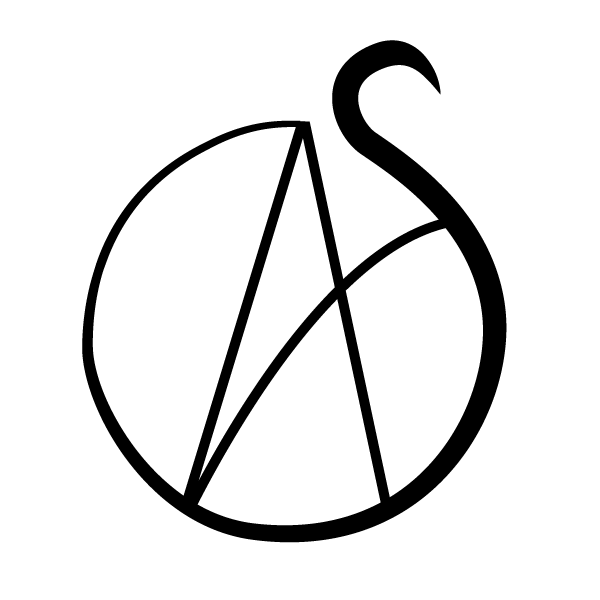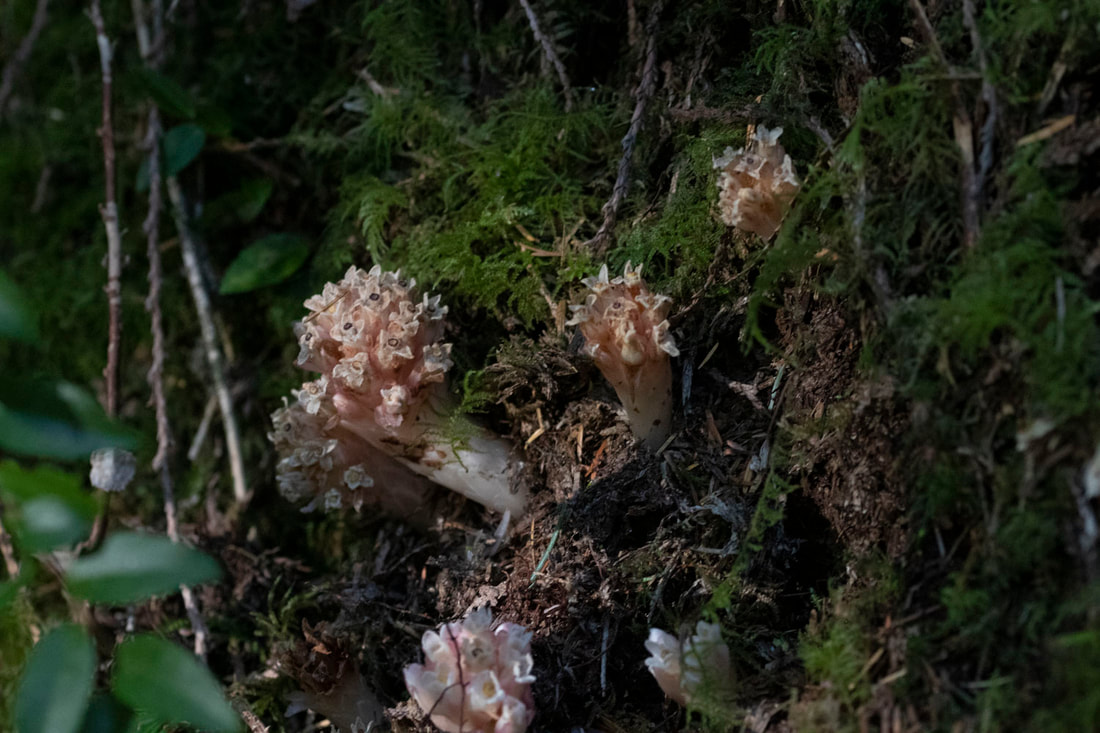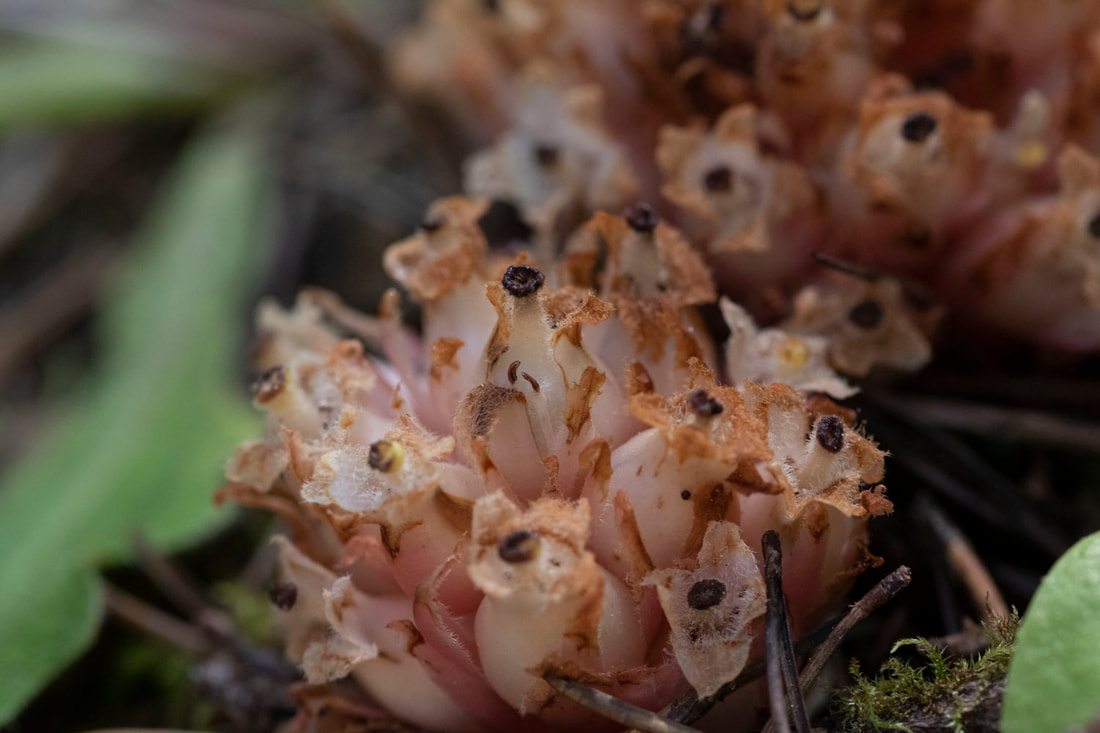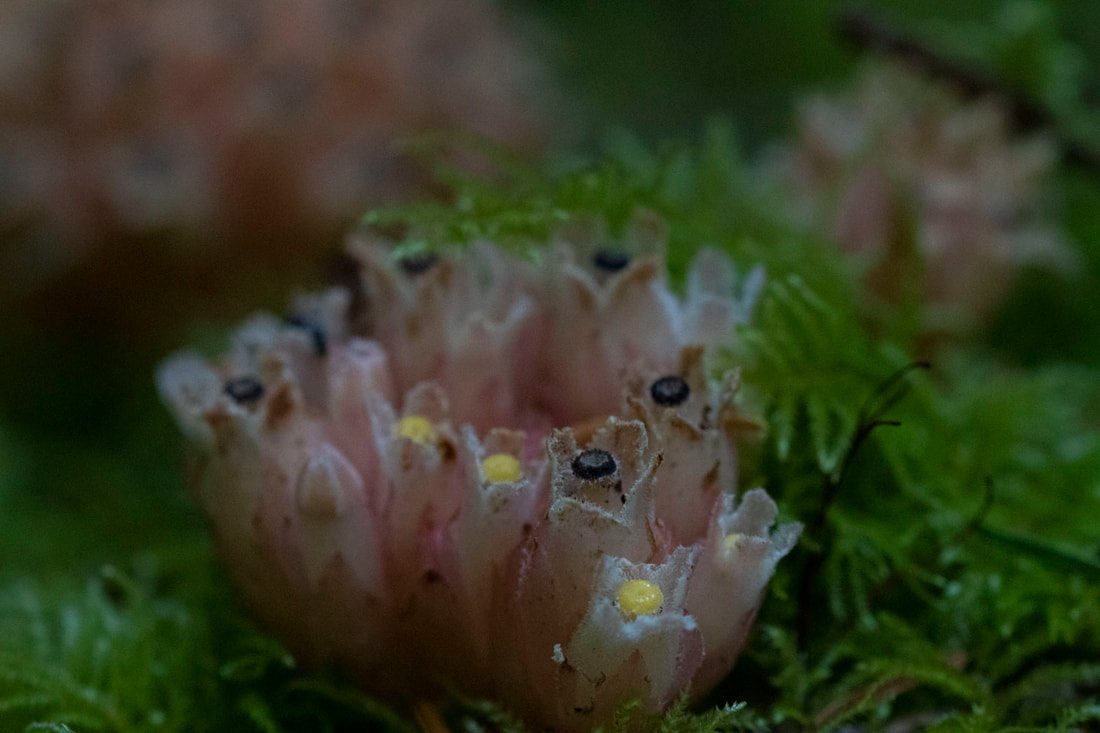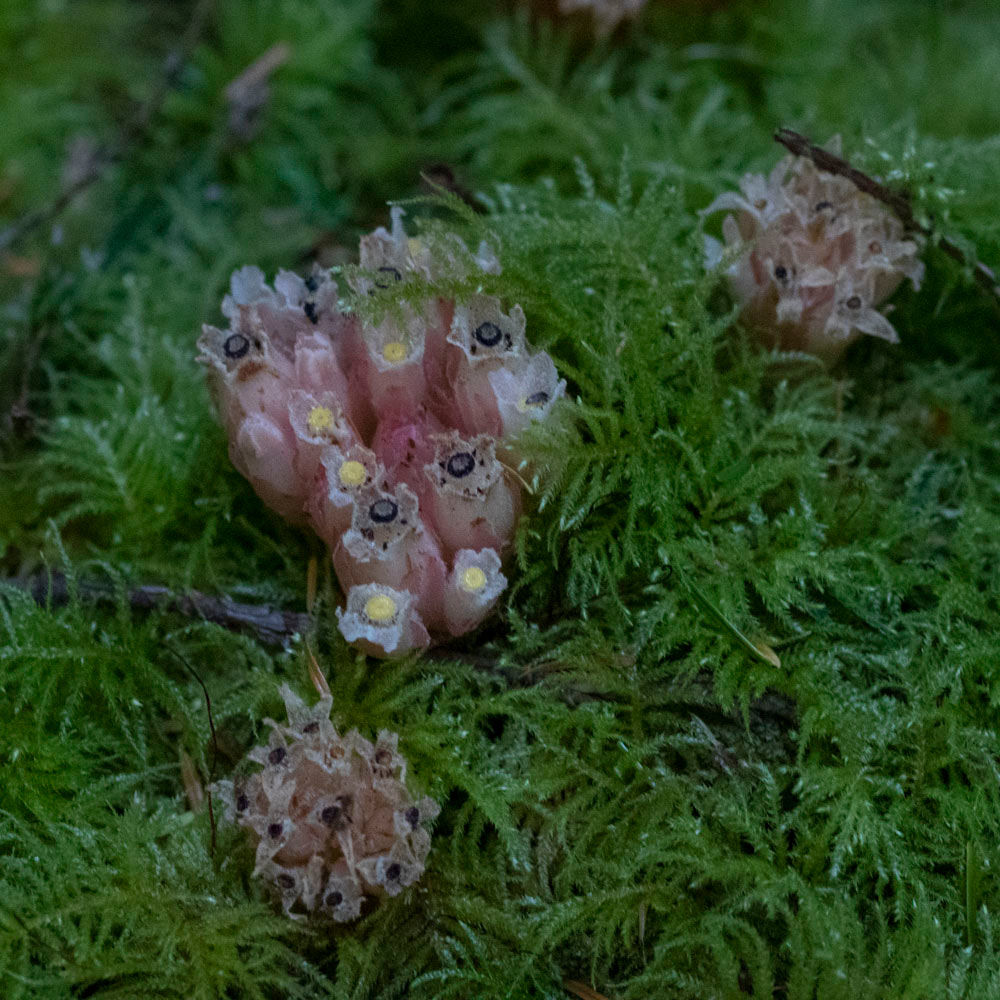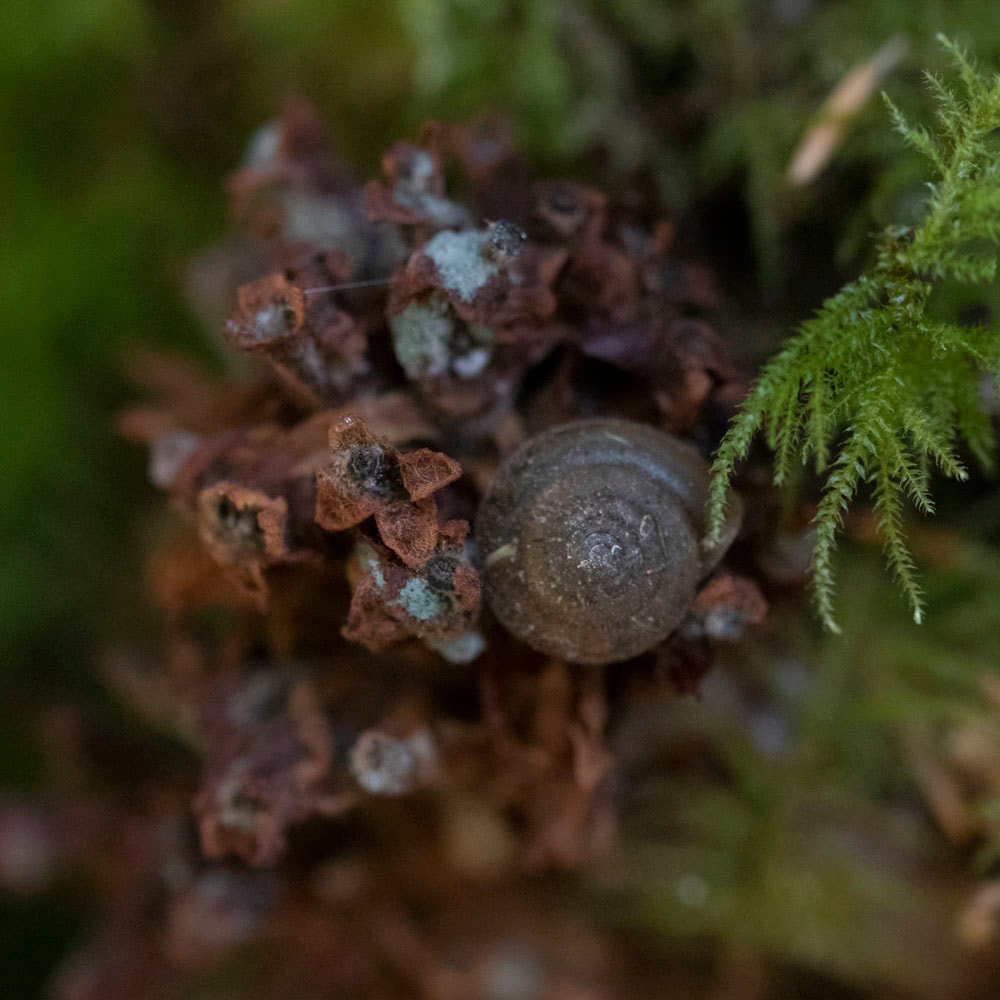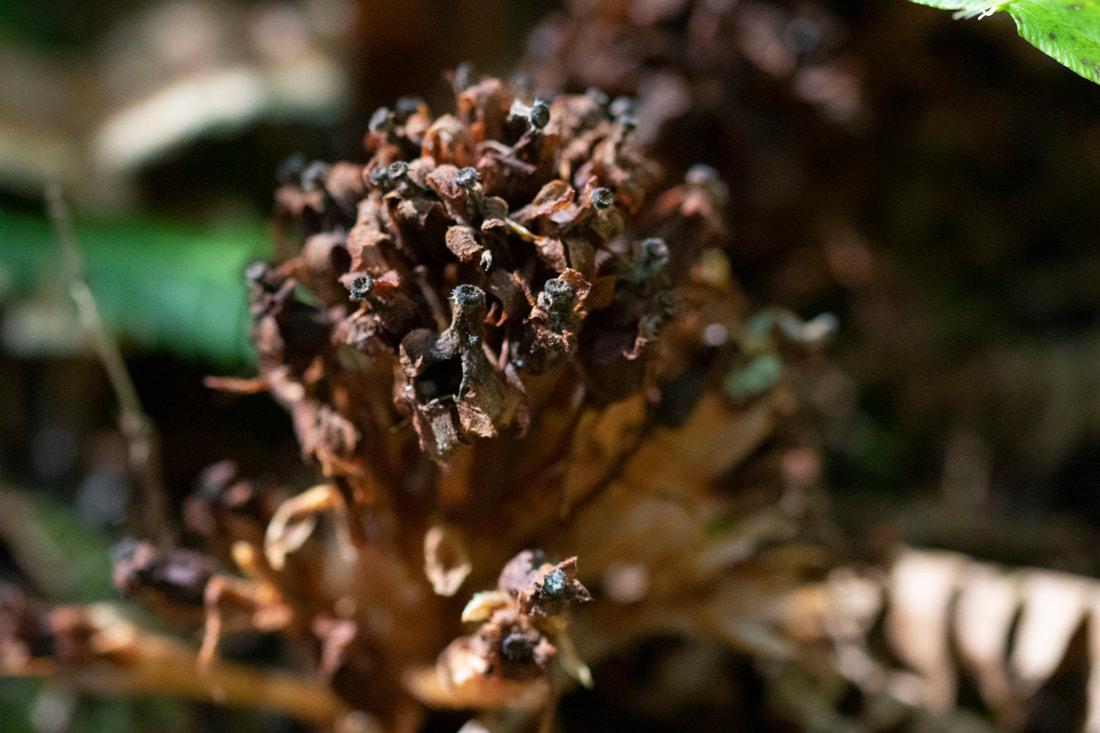Hemitomes congestum
I have been on the hunt for mycoheterotrophs since Leah Bendlin came to the Willamette Valley Mushroom Society and presented about these wondrous plants. "...[M]ycoheterotrophs obtain their nutrition indirectly from the plant via a mycorrhizal fungus. The mycorrhizal fungus, attached to the roots of a photosynthetic plant, thus acts as a bridge between that plant and the mycoheterotroph, such that nutrients (carbon) flow from plant root, to mycorrhizal fungus to the mycoheterotroph" (https://parasiticplants.siu.edu/Mycotrophs/Mycotrophs.html).
Hemotomes congestum otherwise known as the Gnome-plant, is a wonderful tight cluster of flowers growing directly off of a central stem. They are like mini bouquets in the summer forest. I have always expressed my interest in mycoheterotrophs to my study group, so this summer we all started looking for them on all of our forays. This one foray in late July, Diana and I were exploring the coastal range of Oregon, to see if we could find Lobster Mushrooms (Hypomyces lactiflorum) but we were not having much luck following a dry July. We spent about an hour looking through the Shore Pine forest and decided to head to another spot. On our way back down the trail, this little peach colored cluster caught my eye. Down there at the base of a Pine tree were growing two tiny bouquets of H. congestum! At the time I had no idea what they were, but Diana knew immediately and got really excited. We took pictures, documented our find with a video and she patiently explained all of the parts of this plant in detail.
This is a waxy pink mycoheterotroph, and at first resembles a pine cone, but after it blooms, "...it reveals a crowded (congestum) head of pink-yellow flowers" (Polar, p354). This is the only species in this genus, Hemotomes, and this Latin name means half-sterile, because half of the anther cells are sterile. Being a mycoheterotroph also means that this plant does not produce its own chlorophyll, and does not have any green parts. It grows in duff and gets its nutrients from the mycelium and tree root network below.
This is a waxy pink mycoheterotroph, and at first resembles a pine cone, but after it blooms, "...it reveals a crowded (congestum) head of pink-yellow flowers" (Polar, p354). This is the only species in this genus, Hemotomes, and this Latin name means half-sterile, because half of the anther cells are sterile. Being a mycoheterotroph also means that this plant does not produce its own chlorophyll, and does not have any green parts. It grows in duff and gets its nutrients from the mycelium and tree root network below.
Once I found this plant, I kept finding it in different coastal range forests all summer. I noticed that some of the center of the flowers were black and some were yellow. The color difference indicates which flower has been pollinated.
As the season progressed, I watched the little pink bouquets turn brown and be consumed by molds and snails. By the time the fall rains came, they had all disappeared.
If you are ever in the forest in the summer, look out for these little Gnome-plants, but don't ever pick them. Just say hi and enjoy them where they are.
As the season progressed, I watched the little pink bouquets turn brown and be consumed by molds and snails. By the time the fall rains came, they had all disappeared.
If you are ever in the forest in the summer, look out for these little Gnome-plants, but don't ever pick them. Just say hi and enjoy them where they are.
Resources:
http://mhp.myspecies.info
https://parasiticplants.siu.edu/Mycotrophs/Mycotrophs.html
Pojar, Jim, and Andy MacKinnon. (2004) Plants of the Pacific Northwest Coast: Washington, Oregon, British Columbia & Alaska.
Selosse, M.‐A. and Cameron, D.D. (2010), Introduction to a Virtual Special Issue on mycoheterotrophy: New Phytologist sheds light on non‐green plants. New Phytologist, 185: 591-593. https://doi.org/10.1111/j.1469-8137.2009.03151.x
http://mhp.myspecies.info
https://parasiticplants.siu.edu/Mycotrophs/Mycotrophs.html
Pojar, Jim, and Andy MacKinnon. (2004) Plants of the Pacific Northwest Coast: Washington, Oregon, British Columbia & Alaska.
Selosse, M.‐A. and Cameron, D.D. (2010), Introduction to a Virtual Special Issue on mycoheterotrophy: New Phytologist sheds light on non‐green plants. New Phytologist, 185: 591-593. https://doi.org/10.1111/j.1469-8137.2009.03151.x
